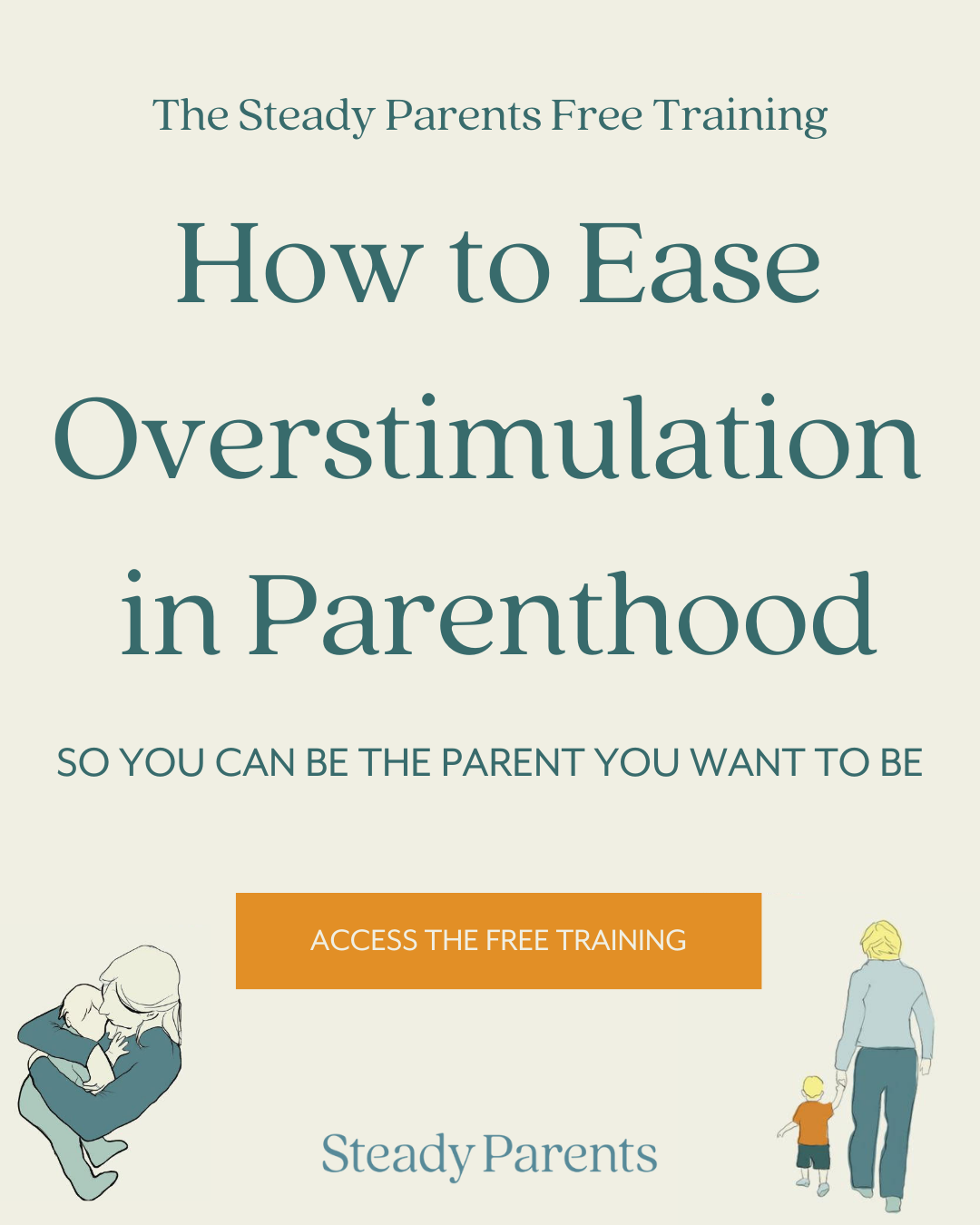Effects of Understimulation for the ADHD Nervous System
The idea of understimulation may seem strange in a world with abundant stimuli and constant connectedness, especially for a person with ADHD. However, there is a contradiction beneath the surface of our hyperconnected existence—we are not giving our nervous system the sufficient input it needs.
Our mental and physical health may be severely impacted by this understimulation, which might reveal layers of problems that need attention and coping mechanisms.
This blog aims to investigate the complex dynamics of under stimulation, analyze its impact on the neurological system, and provide solutions for overcoming this sometimes-ignored part of contemporary life.
Understanding Understimulation
Understimulation, often referred to as "boredom" or "lack of excitement," is a state where our minds and bodies receive insufficient sensory input and mental engagement. It's not just about having "nothing to do" but rather a shortage of activities or experiences that capture our attention and curiosity.
Symptoms of Understimulation for Someone with ADHD
Recognizing indicators of understimulation is critical for taking preventative measures and to prevent a person with ADHD from having strong outbursts and behavioral episodes.
When you’re understimulated, you might feel sluggish, bored, unmotivated, and inattentive. This can happen often in the mundane moments of parenthood and is especially triggering for those with ADHD who need a perfect balance of stimulation and sensory input.
You might even be more prone to feelings of frustration or anger, snapping at your kids at the drop of a hat. Or maybe you have that restless feeling- like you know you should be doing more but instead you find yourself mindlessly scrolling through your phone, not able to focus on anything in particular.
Maybe you find yourself staring off into space when your kids are at the playground because you simply didn’t get enough sensory input in throughout the day.
Restlessness, irritability, and a persistent sensation of "just going through the motions" are common symptoms. We can take action before an issue impacts our general health if we know these indications.
These are all symptoms of understimulation that can go unnoticed among busy parents, but what causes these feelings?
Causes and Triggers
Various factors, including monotonous routines, isolation, and limited exposure to new or engaging stimuli, can trigger understimulation.
Sometimes our parenting routine can feel like groundhogs day, mindlessly going through the same motions day in and day out.
If you work a 9-5 job, you may have these feelings of monotony, too!
The Nervous System's Role
Our nervous system is critical in processing and responding to environmental inputs. When understimulated, our nervous system does not get the messages it requires to function optimally. This can have severe consequences for our bodily and emotional health.
The Effects of Understimulation on the Nervous System
Here are some effects of understimulation on the nervous system:
Impact on Cognitive Function
Understimulation can take a toll on our cognitive abilities, affecting our mental sharpness and intellectual performance. Concentration and focus become challenging tasks when the brain doesn't receive adequate stimulation.
You may find it harder to complete tasks efficiently, retain information, or even stay engaged in conversations. This cognitive fog can hinder problem-solving skills and creative thinking, limiting your overall productivity.
Understanding how understimulation impacts cognitive function is crucial in recognizing its effects and taking proactive steps to address this issue, which we will explore in detail in the following sections.
Emotional Consequences
Understimulation can have serious emotional consequences for a person's mental health. When the neurological system does not get the essential impulses, it frequently increases emotional sensitivity and instability.
Individuals experiencing understimulation may find themselves grappling with increased stress and anxiety, as their minds lack the distractions and engagement needed to maintain a sense of calm. Mood swings and irritability become common as emotional responses become more volatile.
This emotional turbulence can strain relationships, hinder personal growth, and reduce overall life satisfaction. Understanding these emotional consequences is crucial in developing effective coping strategies to combat the adverse effects of understimulation.
Physical Manifestations
Understimulation directly impacts our nervous system and triggers various physical symptoms. Sleep disturbances are common, with difficulties falling asleep, frequent nighttime awakenings, and daytime fatigue being prevalent. This disrupts mood and cognitive function.
Moreover, understimulation is frequently the cause of muscular discomfort and stress. Increased muscular tightness results from insufficient stimulation of the neurological system, which can cause discomfort and even long-term problems with the muscles.
These physical manifestations emphasize the need to acknowledge and counter under-stimulation for better overall health and well-being.
Constantly reaching for your phone? You could be understimulated!
Coping Strategies for Understimulation
A comprehensive strategy that tackles the underlying causes of understimulation and includes techniques to bring back the essential sensory input into our lives is needed to cope with it. The following are a few coping mechanisms to think about:
Engage in Stimulating Activities
To combat understimulation, seeking out activities that engage your senses and mind is essential. This means making a deliberate choice to participate in events or experiences that stimulate your senses and imagination.
For instance, reading a captivating book can transport you to different worlds and engage your mind in exciting adventures. Similarly, watching provoking movies may pique your interest and force you to consider various topics.
Music and movement can also be a potent instrument for stimulation because it may bring out a wide range of feelings and moods. The key is to make sure the music consists of exciting, arrhythmic songs that can help alert you in the moment of inattention or sluggishness.
Put it on over headphones if you really need to center yourself, or play it through the house when you need to shift the energy in the whole family (although some songs may not be suitable for little ears).
Enhance Environmental Stimulation
Changing your surroundings that introduce more sensory experiences is also a way to cope with understimulation. One way to do this is by adjusting the lighting in your environment, making it brighter and more vibrant. Brighter lighting can create a more energizing atmosphere.
Another effective strategy is to bring nature indoors by adding natural elements like potted plants or decorative elements inspired by the outdoors. These natural features can provide visual and tactile stimulation while also improving the overall ambiance.
By designing a sensory-rich space, you can significantly enhance your well-being, making your environment a more stimulating and fulfilling place to spend time.
Increase Personal Arousal
Make an effort to raise your level of arousal. Frequent exercise like jogging, swimming, or even short walks can be especially beneficial since it provides mental and physical stimulation.
These effects improve your physical fitness and energize your thoughts, making you more alert and determined to face daily obstacles. So, consider incorporating exercise into your routine to boost personal arousal and combat understimulation.
Social Engagement
Social Engagement plays a vital role in fostering human connection and enhancing overall well-being. Spending quality time with friends and family is a powerful social and sensory stimulation source.
These interactions not only boost positive emotions but also diminish feelings of loneliness. Meaningful connections are the foundation of a happy life, infusing it with joy and a sense of belonging.
Accepting these connections broadens one's emotional landscape and creates a deep sense of satisfaction and fulfillment.
Though it may seem like extra work in the moment, plan a playdate with a close friend. Even if the kids are acting chaotic, having a friend over to co-parent with can be the mix-up in routine you need to get your nervous system back in check.
“We must proactively seek balanced stimulation through diverse experiences, maintain social connections, engage in stimulating activities, and prioritize our mental health, ensuring a healthier, more resilient nervous system.”
Factors Contributing to Understimulation
Screen Time and Digital Devices
Excessive screen use, mainly via smartphones, tablets, and computers, reduces engagement with the physical world. This diminishes attention spans and hampers cognitive development.
You might notice when you’re bored, your instinct is to reach for your phone. I encourage you to put it on airplane mode and leave it in another room and try to engage in movement or listening to music instead!
Your body will notice the difference and your friends won’t mind if you don’t respond to their text that very instant.
Sedentary Lifestyles
Modern sedentary habits, characterized by prolonged sitting and minimal physical activity, contribute to mental stagnation and disconnection from the physical world, impacting both physical and mental health.
Get outside and go for a walk to break up your day!
Social Isolation and Lack of Meaningful Connections
Social isolation, fueled by factors like social media and urbanization, results in a lack of meaningful relationships. Loneliness negatively affects mental health and cognitive abilities, while meaningful connections promote intellectual and emotional stimulation.
Work-Related Stress and Monotony
High-stress jobs and monotonous work routines lead to mental fatigue and intellectual stagnation. This chronic exposure may have lasting effects on cognitive abilities and overall well-being.
Environmental Factors
Uninspiring physical surroundings at home and in public spaces contribute to understimulation. Conversely, stimulating environments encourage creativity and mental alertness, while access to natural settings provides rejuvenation and sensory engagement.
Open your windows and let the sun and fresh air in if the weather permits! Have some photos of your family and friends on the wall or at your desk to break up the stark nature of your office. It can make a big difference!
Conclusion
In conclusion, understimulation can take a toll on our nervous system, affecting cognitive function and overall well-being.
To help our nervous system achieve more of a balance, we must proactively seek balanced stimulation through diverse experiences, maintain social connections, engage in stimulating activities, and prioritize our mental health, ensuring a healthier, more resilient nervous system.
Looking for someone’s help to take you out of the understimulation zone? Check out our Steady Parents Playlist for Understimulation here.
Pin this for Later:









